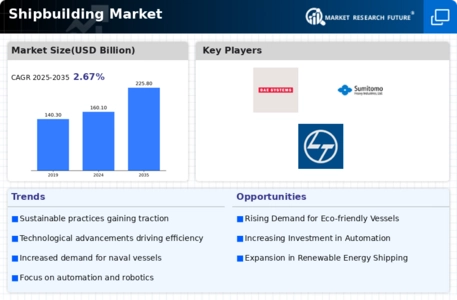Looking ahead, the shipbuilding market is ripe for disruption. The MRFR report, along with adjacent research, highlights innovations likely to reshape the space.
Digitalization & smart shipyards
Shipyards transforming into “Industry 4.0” hubs—with IoT devices, predictive maintenance, digital twins, real-time monitoring—improve throughput, reduce bottlenecks, and optimize resource use.
For example, smart pipe systems (traceable parts in shipyards) help track components, reduce errors, and enhance productivity. (Research in smart shipyard systems supports that such cyber-physical integration is gaining ground.)
Generative AI and design optimization
Generative AI algorithms for hull form design and multi-objective optimization are emerging in marine engineering, capable of exploring non-intuitive designs that balance hydrodynamics, structural integrity, and emissions. (Recent research suggests deploying AI in ship design workflows.)
Robotics & automation
Robotics is increasingly applied to painting, welding, inspection, and modular assembly. The robotics in shipbuilding market is growing rapidly, signaling that automation will be a key enabler of productivity and cost control. (MRFR’s robotics segment shows high growth.
Sustainability & circular economy
Future ships may be designed for reuse, modular replacement, recyclable materials, and lower carbon footprints. Hybrid or electric propulsion, CO₂ capture on board, and alternative fuels (hydrogen, ammonia) will gradually enter the mainstream.
Outlook summary
By 2030 and beyond, shipbuilding may shift from large monolithic builds to modular, digitally optimized, environmentally conscious processes. Yards that adopt innovation early will steer ahead in efficiency and differentiation, while traditional yards risk obsolescence.



